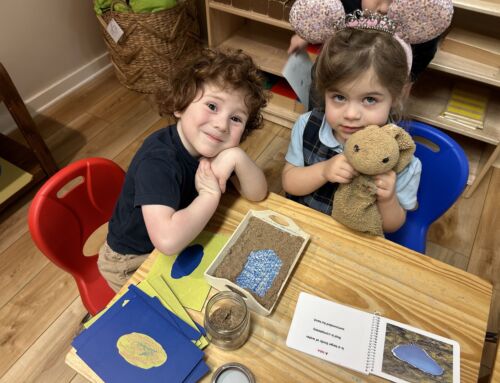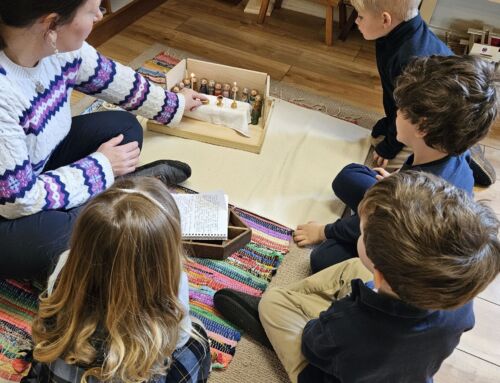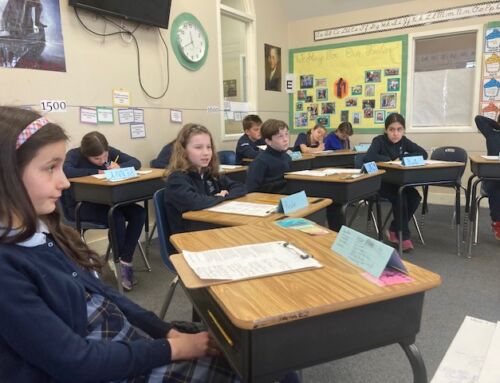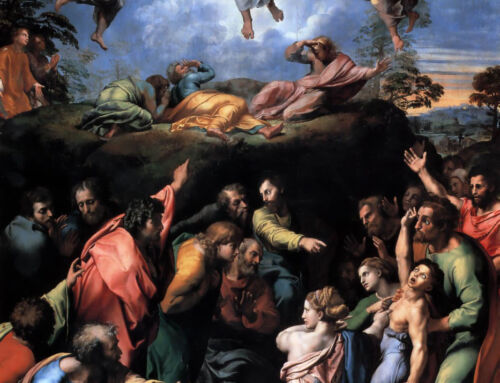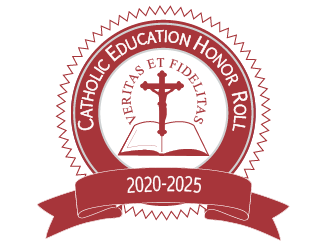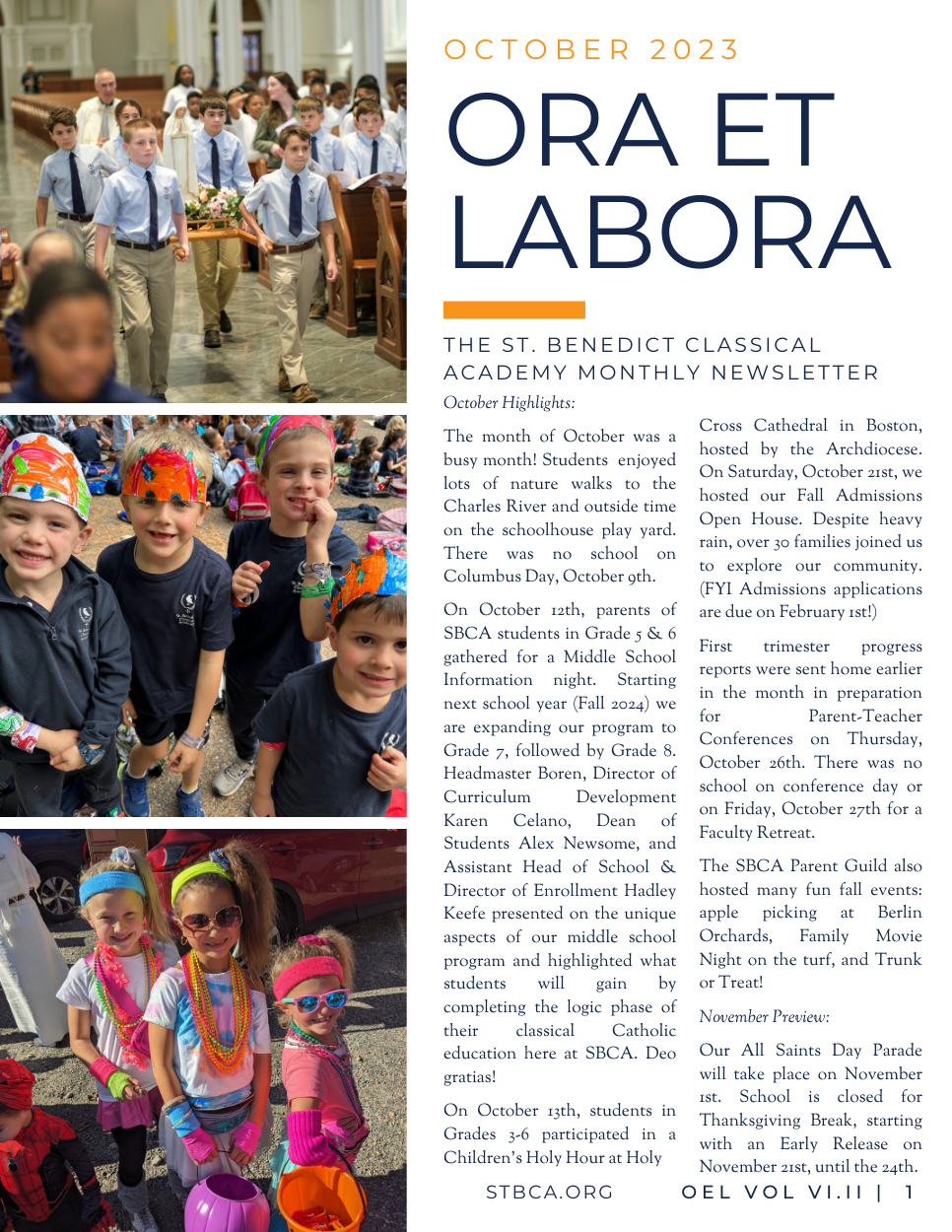“Then children were brought to [Jesus] that he might lay his hands on them and pray. The disciples rebuked them, but Jesus said, ‘Let the children come to me, and do not prevent them; for the kingdom of heaven belongs to such as these.’ After he placed his hands on them, he went away.” – Matthew 19:13-15
When I heard the above Gospel reading in Mass earlier this month, I was struck by the tremendous duty entrusted to me. The kingdom of heaven belongs to my students. They have a solemn birthright, a claim to their intellectual patrimony, including the very best songs, stories, and images in our tradition. As an example of how this is lived in my classroom, I’ll share a glimpse into my sixth grade literature class.
We began the year by reading The Epic of Gilgamesh, the world’s oldest surviving piece of epic literature. The Sumerian tale follows prideful Gilgamesh as he journeys to win glory and discover the secret to eternal life. Through a series of failures and foils, heroic Gilgamesh is humbled and returns to his city to rule in peace for the rest of his days. In the end, he recognizes himself as he always was: a mortal man.
To complement their reading of the ancient epic, my students also memorized and recited a sonnet, “Ozymandias”, by Romantic poet Percy Shelley. Much like his Sumerian counterpart, Egyptian Pharaoh Ozymandias (who is better known as Ramses the Great) was a powerful king. At the height of his reign, he ordered his sculptors to build a vast statue in his likeness.
And on the pedestal, these words appear:
My name is Ozymandias, King of Kings;
Look on my Works, ye Mighty, and despair!
The poem’s final lines reveal the great irony of this inscription. Three millennia later,
Nothing beside remains. Round the decay
Of that colossal Wreck, boundless and bare
The lone and level sands stretch far away.
As a class, we discussed how the Mighty would not fear Ozymandias himself, but rather his example. We also looked at a collection of Romantic paintings from Shelley’s contemporaries, and my students pointed out some common elements: massive thunder clouds, dramatic ocean waves, tiny human figures. These paintings reveal a lesson also found in Shelley’s sonnet. Compared with the power of nature, the most powerful are utterly insignificant.
Beautiful pictures and stories like these are invaluable for forming a child’s character and moral imagination. They affirm the wisdom revealed to us by God in scripture; those who exalt themselves will be humbled, and it is better to store up treasures in heaven, where they will not decay. As parents and teachers, to share these lessons with our children is to prepare their hearts to come freely to Jesus and to inherit the kingdom of heaven.
Author: Emily Hernandez, Grade 6 Teacher

